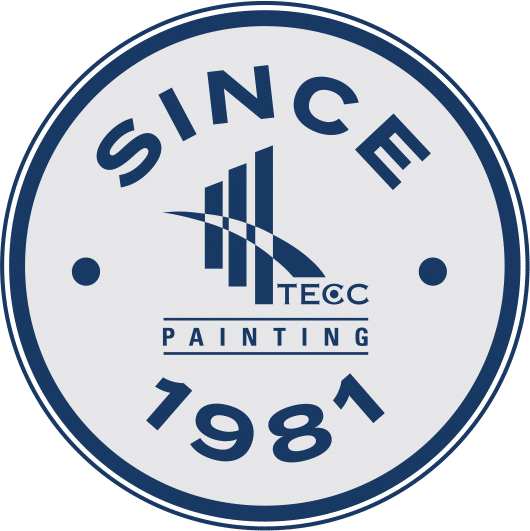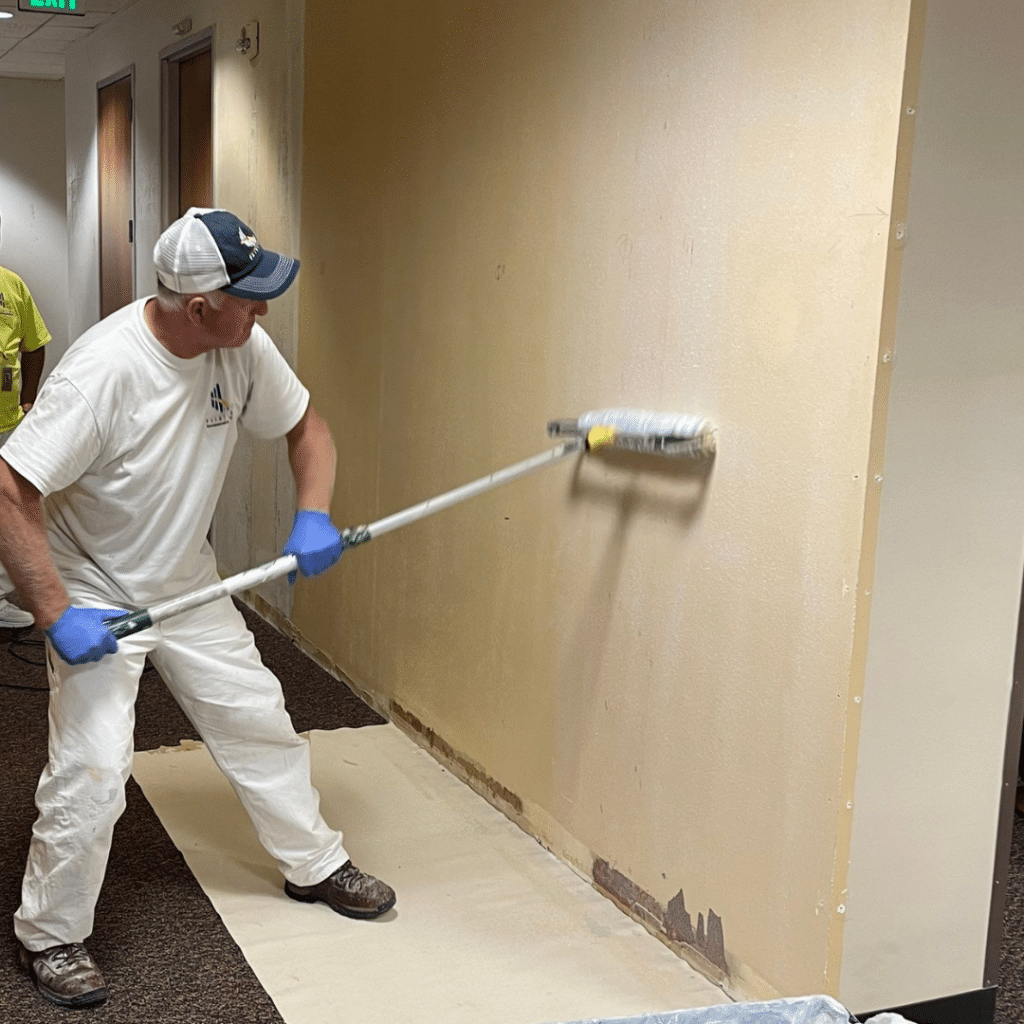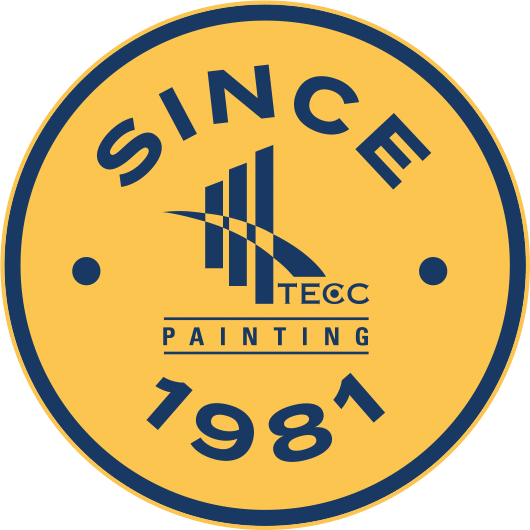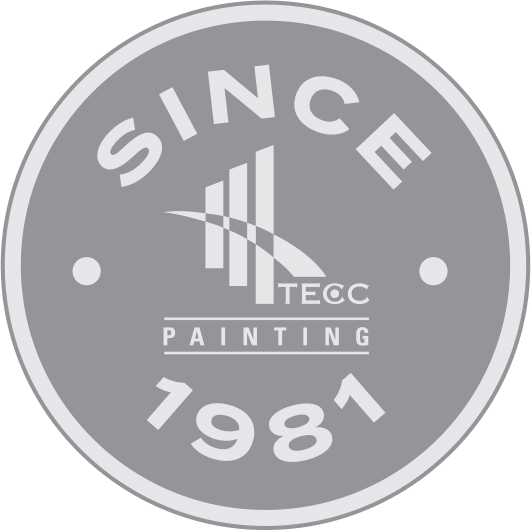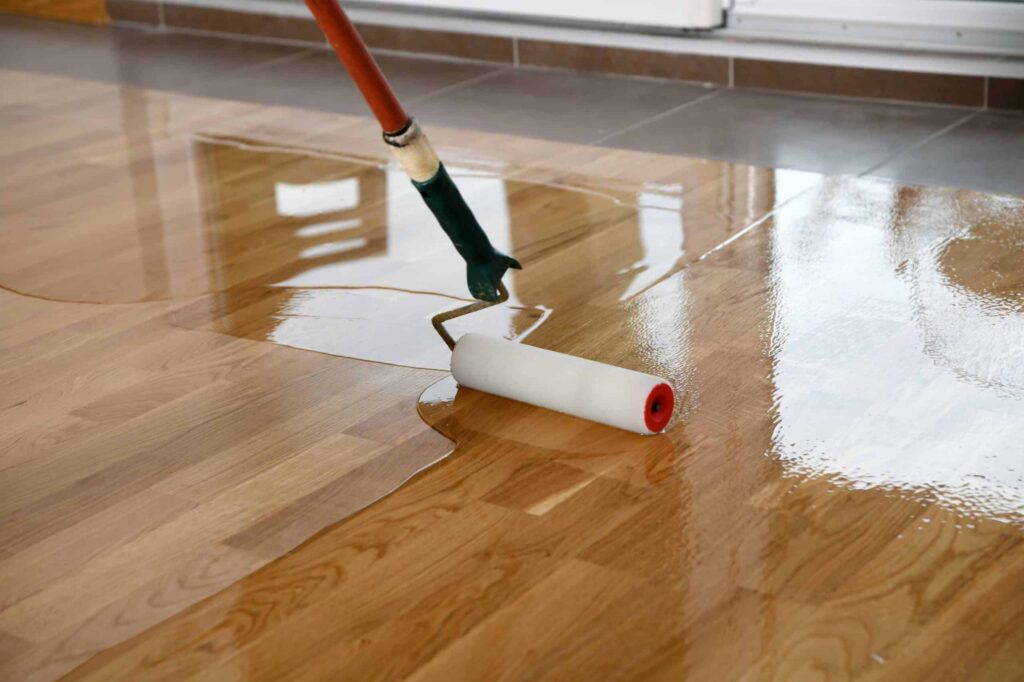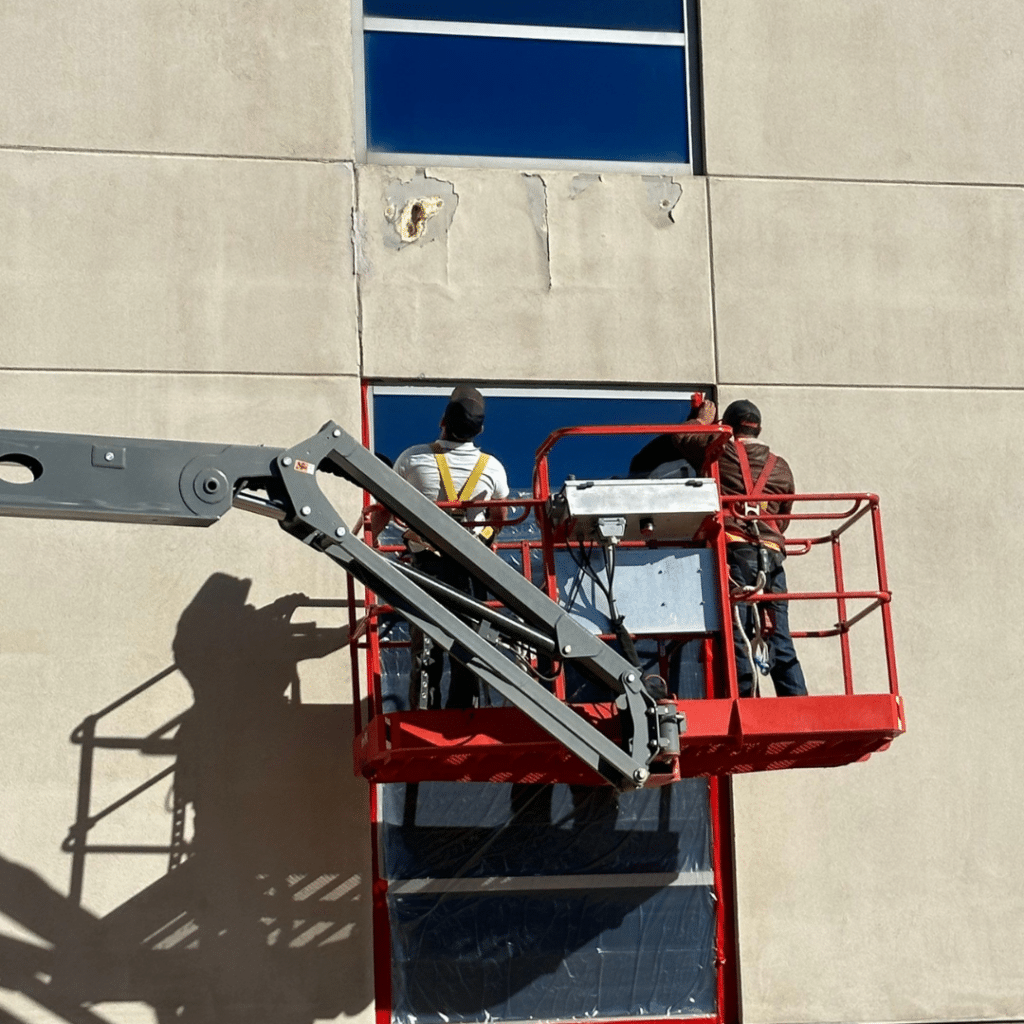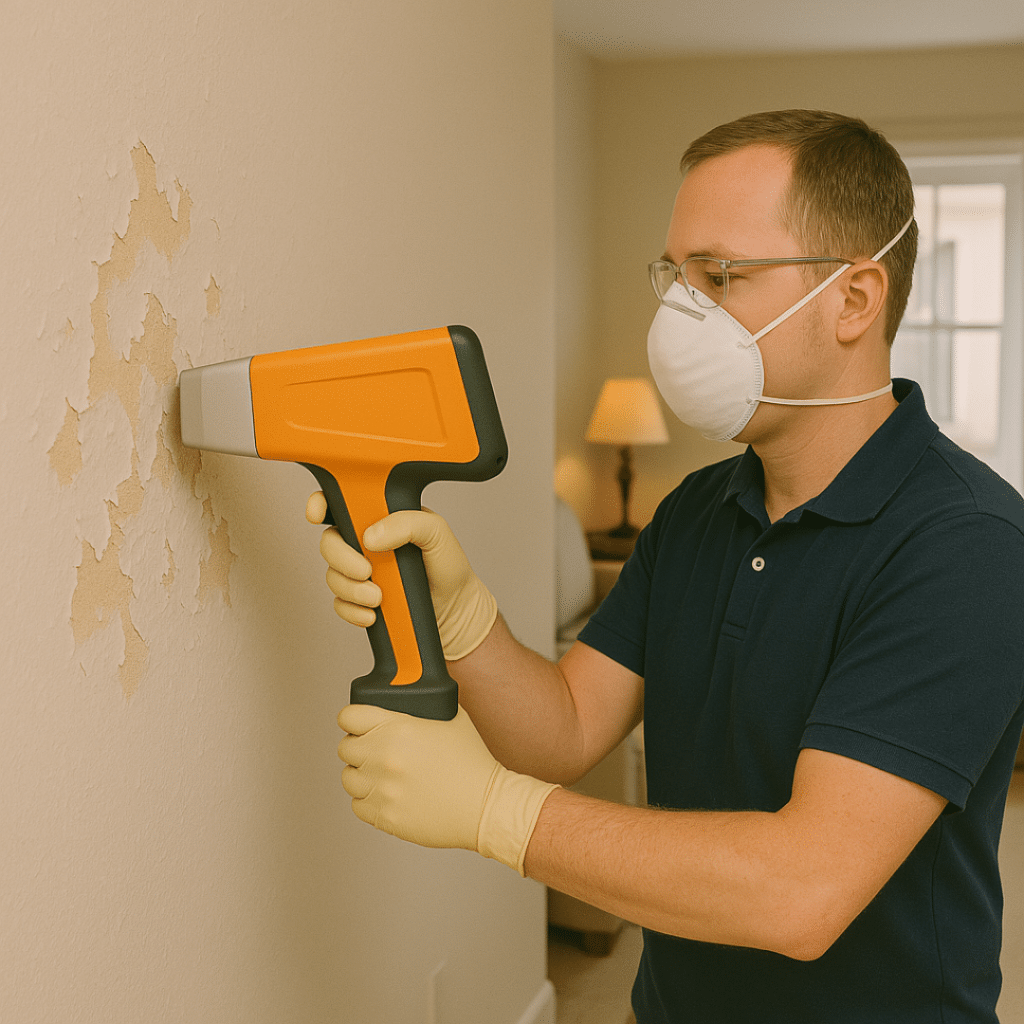The best facility winter painting solutions in Colorado for moisture and mold control help prevent costly moisture damage, mold growth, and structural deterioration. Harsh winter conditions can make commercial properties vulnerable, but with the right coatings and techniques, your facility can maintain its integrity and appearance. This article provides expert guidance to help you make informed decisions.
Facility winter painting solutions in Colorado include moisture-resistant coatings to protect surfaces from condensation and humidity, mold-inhibiting primers to prevent fungal growth in high-moisture areas, low-temperature application paints designed to cure effectively in winter conditions, thorough surface preparation to eliminate existing moisture issues, and scheduled maintenance painting to extend the life of building materials.
TABLE OF CONTENTS
- Why Winter Conditions Make Your Facility Vulnerable to Moisture and Mold
- Facility Winter Painting Solutions in Colorado: The Best Coatings for Maximum Protection
- Essential Preparation Steps to Prevent Moisture Damage Before Painting
- The Best Time to Schedule Winter Painting for Maximum Protection
- Long-Term Strategies to Maintain Moisture Control and Extend Paint Life
- Protect Your Facility with Expert Winter Painting Solutions
Key Takeaways:
- Winter conditions increase moisture risks that can lead to structural damage and mold growth.
- Specialized coatings such as moisture-resistant paints, elastomeric coatings, and mold-inhibiting primers offer long-term protection.
- Proper surface preparation is essential for effective adhesion and durability.
- Winter painting can be advantageous when scheduled strategically to minimize disruption.
- Ongoing maintenance is necessary to preserve the effectiveness of facility winter painting solutions in Colorado and extend the lifespan of protective coatings.
Understanding these solutions is the first step in protecting your facility from winter-related damage. Keep reading to learn more about the best coatings, preparation techniques, and professional strategies to ensure long-lasting results.
Why Winter Conditions Make Your Facility Vulnerable to Moisture and Mold
Colorado’s cold climate presents challenges for facility maintenance, with moisture being a major concern. The EPA reports that 85% of public and commercial buildings in the U.S. have experienced water damage, and 45% still deal with leaks, making moisture control essential for structural protection. Temperature shifts, snowfall, and humidity fluctuations allow moisture to seep into walls, ceilings, and floors, leading to mold growth, peeling paint, and deterioration.
Exterior walls exposed to freezing and thawing cycles are prone to cracks and water infiltration. HVAC systems create condensation, increasing indoor humidity, while poorly ventilated areas like storage rooms and kitchens encourage mold growth. Recognizing these risks early allows facility managers to implement best facility winter painting solutions in Colorado for moisture and mold control, ensuring long-term protection and durability.
Facility Winter Painting Solutions in Colorado: The Best Coatings for Maximum Protection
Selecting the right coatings is critical for maintaining a facility’s structural integrity. High-performance, winter-resistant paints provide protection against moisture while ensuring a professional finish. The best coatings for moisture and mold control include:
- Moisture-resistant coatings – These seal porous surfaces, preventing water infiltration.
- Mold-inhibiting primers – Ideal for areas prone to high humidity, these coatings reduce fungal growth. Research from NC State University shows that specific coatings can completely prevent mold growth, making them highly effective for moisture control.
- Elastomeric paint – A flexible, durable option for exterior surfaces that expand and contract with temperature changes.
- Low-temperature curing paints – Designed for cold-weather applications, these paints adhere well and cure effectively in lower temperatures.
Using facility winter painting Solutions in Colorado, such as these specialized coatings, is a key aspect of commercial painting, helping business owners protect their investments and extend the life of their buildings.
Essential Preparation Steps to Prevent Moisture Damage Before Painting
Proper surface preparation is essential for ensuring moisture-resistant coatings adhere correctly and provide long-lasting protection. Without it, paint effectiveness is compromised, leading to potential peeling or damage over time. Before starting, thoroughly inspect surfaces for cracks, leaks, or moisture issues and address any necessary repairs. Just like in interior painting, following proper preparation techniques ensures a smooth and durable finish. Thorough cleaning is also necessary to remove dirt, grease, and mold, ensuring a smooth and durable finish.
Allowing surfaces to fully dry before application prevents sealing in moisture, which can lead to premature failure. Professional assessments by experienced painters help ensure compliance with best practices for winter applications, maximizing the coating’s performance. Skipping these steps increases the risk of paint deterioration, but a properly prepped surface enhances durability and ensures that facility winter painting solutions in Colorado provide optimal protection.
The Best Time to Schedule Winter Painting for Maximum Protection
Timing plays a key role in the success of winter painting projects. While many assume painting should be avoided in cold months, advancements in paint technology allow for high-quality results even in winter. Advantages of scheduling facility painting in winter include:
- Less business disruption: Many industries experience slower operations during winter, making it a convenient time for facility maintenance.
- Faster project completion: Professional painters have greater availability, ensuring timely execution.
- Preparation for spring and summer humidity: Addressing moisture issues now prevents problems from worsening in warmer months.
Colorado’s unpredictable weather requires flexibility. Working with professionals experienced in facility winter painting solutions in Colorado ensures that coatings are applied in optimal conditions for maximum durability.
Long-Term Strategies to Maintain Moisture Control and Extend Paint Life
Implementing long-term maintenance strategies is crucial for protecting your facility’s surfaces and maintaining a professional appearance year-round. Seasonal inspections are essential for identifying early signs of paint failure, leaks, or mold growth before they escalate into costly issues. Notably, water and mold damages cost insurance companies approximately $2.5 billion annually, underscoring the financial impact of neglecting regular upkeep. Scheduled touch-ups in high-traffic areas help extend the longevity of protective coatings, preventing premature wear.
Upgrading ventilation systems can also reduce condensation and humidity levels, minimizing the risk of moisture damage. Partnering with professional painters ensures that facility winter painting solutions in Colorado remain effective over time through expert maintenance and timely reapplications. Investing in a proactive maintenance plan reduces long-term repair costs and helps safeguard your facility against winter-related moisture challenges.
Protect Your Facility with Expert Winter Painting Solutions
Investing in facility winter painting solutions in Colorado is a proactive way to prevent moisture damage, mold growth, and structural deterioration. The right coatings, thorough preparation, and strategic scheduling help maintain a durable, professional finish while minimizing operational disruptions. Ongoing maintenance ensures long-term protection, reducing the risk of costly repairs. Consulting with professionals can streamline the process and ensure the best results for your facility.
Get a quote today to discuss tailored solutions for your building’s winter painting needs, and see how TECC Painting can help protect and maintain your property with expert application and durable coatings.
FAQS:
How does winter painting improve energy efficiency?
Specialized coatings reduce thermal transfer and moisture infiltration, helping retain heat and lowering HVAC strain. Moisture-resistant paints also prevent excess humidity, reducing condensation and improving climate control, leading to lower energy costs.
What happens if facility painting is delayed until spring?
Delaying painting can lead to prolonged moisture damage, mold growth, and structural weakening. Cold weather worsens cracks and paint deterioration, making repairs costlier. Winter painting protects surfaces before damage escalates.
Can exterior surfaces be painted in freezing temperatures?
Yes, with low-temperature curing paints designed for cold-weather application. These coatings adhere well and cure properly despite the cold. Proper surface prep and professional application ensure lasting durability.
